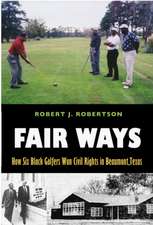Perceived Exertion Laboratory Manual: From Standard Practice to Contemporary Application
Autor Luke Haile, Michael Gallagher, Jr., Robert J. Robertsonen Limba Engleză Hardback – 8 noi 2014
| Toate formatele și edițiile | Preț | Express |
|---|---|---|
| Paperback (1) | 371.47 lei 6-8 săpt. | |
| Springer – 22 sep 2016 | 371.47 lei 6-8 săpt. | |
| Hardback (1) | 378.43 lei 6-8 săpt. | |
| Springer – 8 noi 2014 | 378.43 lei 6-8 săpt. |
Preț: 378.43 lei
Preț vechi: 398.35 lei
-5% Nou
Puncte Express: 568
Preț estimativ în valută:
72.42€ • 77.43$ • 60.38£
72.42€ • 77.43$ • 60.38£
Carte tipărită la comandă
Livrare economică 18 aprilie-02 mai
Preluare comenzi: 021 569.72.76
Specificații
ISBN-13: 9781493919161
ISBN-10: 1493919164
Pagini: 250
Ilustrații: XXII, 322 p. 62 illus.
Dimensiuni: 155 x 235 x 25 mm
Greutate: 0.66 kg
Ediția:2015
Editura: Springer
Colecția Springer
Locul publicării:New York, NY, United States
ISBN-10: 1493919164
Pagini: 250
Ilustrații: XXII, 322 p. 62 illus.
Dimensiuni: 155 x 235 x 25 mm
Greutate: 0.66 kg
Ediția:2015
Editura: Springer
Colecția Springer
Locul publicării:New York, NY, United States
Public țintă
Professional/practitionerCuprins
Assessment. - Borg’s Range Model.- Effort Continua Model: Physiological Mediators.- Rest/Submaximal Exercise Measurements.- Laboratory designed for initial practice before more advanced assessments.- Scale Anchoring: Memory/Cognitive Compared with Exercise Anchoring.- Category Scale Validation: Concurrent and Construct.- Interchangeability of scales.- Advanced Scale Anchoring: Estimation-Production Protocols.- Application to leisure-time physical activity and research investigations.- Differentiated Perceived Exertion Model: Signal Dominance and Integration.- Treadmill and cycling: Chest/breathing, legs.- Advanced Differentiated Perceived Exertion Model.- Sub-maximal RPE Tests.- Fitness Measurement and Comparison of Individuals.- Multi-level cycle: PO R Score.- Single level cycle: R PO Score. RPE Run Test.- RPE Prediction of VO2MAX/VO2PEAK – Comparison with HR Models.- Resistance Exercise: RPE Measurement and 1-RM Prediction.- RPE Guided Water Shuttle Run Test. - Gender Effect on RPE.- Affect/Arousal Model (Circumplex) and Dual-Mode Model.- Prescription. - Estimation-Production Prescription Paradigm. - Group-Normalized RPE Zone: RPE at the Ventilatory Threshold. - Intensity Self-Regulation: Intra- and Inter-modal Interval Target RPE. Perceived Exertion JND.- Self-regulation of Exercise Intensity using RPE.- RPE Resistance Exercise Prescription.- Exercise Intensity Preference: Land and Water.- Environmental heat stress – Exercise in Hot versus Cool Environments: Effects on RPE, Affect, Enjoyment.- Program Evaluation.- Predicted – Actual (i.e. In-Task/Momentary). - Circumplex Model: Affect & Arousal.- Match-Mismatch Paradigm: RPE, Pain, Affect, Arousal, Enjoyment, Aversion.- Session Responses: RPE, Pain, Affect, Arousal, Enjoyment, Aversion, Validation.- Sub-maximal RPE Tests for Tracking Physical Activity Participation: Multi- or single-level cycle, RPE Run Test; Exertional Recall and Exertional Observation.- Teleoanticipation. - Self-selectedvs. Imposed Exercise Intensity (Target RPE – Produced).- RPE-based Resistance Exercise Program: Tracking strength/endurance.
Recenzii
From the book reviews:
“This book focuses on both the classroom and real-world application of exercise prescription, assessment, and testing of all individuals. … The audience includes undergraduate and/or graduate students, exercise physiologists, and health behavior specialists. … Its organization and clarity also enables readers to easily transition the information from classroom to real-world setting where it can have the most impact. This is a book that most undergraduates in an exercise-related health field should have in their library.” (Erik H. Van Iterson, Doody’s Book Reviews, April, 2015)
“This book focuses on both the classroom and real-world application of exercise prescription, assessment, and testing of all individuals. … The audience includes undergraduate and/or graduate students, exercise physiologists, and health behavior specialists. … Its organization and clarity also enables readers to easily transition the information from classroom to real-world setting where it can have the most impact. This is a book that most undergraduates in an exercise-related health field should have in their library.” (Erik H. Van Iterson, Doody’s Book Reviews, April, 2015)
Notă biografică
Dr. Luke Haile is Assistant Professor of Health Sciences at Lock Haven University of Pennsylvania. He received his Ph.D. in Exercise Physiology from the University of Pittsburgh. He received his B.S. in Exercise Science and his M.S. in Applied Exercise Physiology from Bloomsburg University of Pennsylvania. Dr. Michael Gallagher, Jr., received his Ph.D. in Exercise Physiology from the University of Pittsburgh. He earned his B.S. in Bioengineering with a concentration in Biomechanics from the Swanson School of Engineering and his M.S. in Exercise Physiology. Dr. Robert J. Robertson is Professor Emeritus of Exercise Physiology in the Department of Health and Physical Activity and the Center for Exercise and Health-Fitness Research at the University of Pittsburgh.
Textul de pe ultima copertă
This unique laboratory manual describes an empirical framework for tailoring individualized exercise programs to client attitudes and perceptions. It presents laboratory experiments that analyze perceptual and psychosocial variables that influence participation in physical activities, describes methods for assessing these factors in clients, offers guidelines for exercise prescription and program evaluation, and features practical applications of current research. The focus on perceived exertion, the physiological responses and psychosocial feelings that occur during exercise, encourages innovative thinking about client self-efficacy, muscular pain, emotions and mood states, and other factors that influence physical activity behavior. These laboratory experiments explore a combination of scientific findings and psychological insights that will inspire practitioners to create effective strategies for increasing physical activity in clients at various stages of illness and health.
Included in the coverage:
Included in the coverage:
- Perceived exertion scaling and validation.
- The estimation-production paradigm for exercise intensity self-regulation.
- Self-selected versus imposed exercise intensities.
- Exercise-induced muscle pain in relation to physical activity.
- The affective response to exercise.
- Application of perceptual models to the measurement of pain and affective responses to exercise.
Caracteristici
Provides laboratory-based learning experience in exercise prescription and programming Focuses on perceptually and psychosocially linked exercise programs Perceptual and psychosocial variables presented in individual stand-alone modules that can supplement existing curricula Conceptual flow allows presentation as a complete laboratory-based course


























